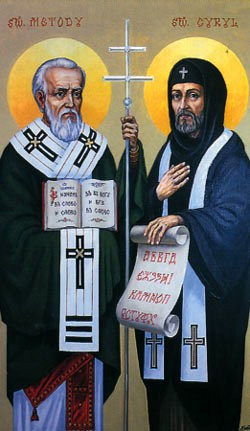
This development is described by David W. Anthony, professor of anthropology at Hartwick College in England. This author has conducted extensive archaeological and DNA fieldwork in the Ukraine, Russia, and Kazakhstan.

Town of Kazimierz and the Vistula River in Poland
The book “The Horse, the Wheel, and Language: How Bronze-Age Riders From the Eurasian Steppes Shaped the Modern World” presents good scientific arguments that are in agreement with the old mythology of Poland and with existing linguistic evidence. The Baltic Sea was sometimes called the Slavonic Sea or Morze Słowiańskie. The Balto-Slavs are known to have lived on the shores of the Baltic Sea as far back as nearly 4000 years ago, according to genetic evidence and carefully time-dated DNA studies.

Therefore Lithuanian, Polish, (old) Prussian, English, Welsh, French, Greek, Kurdish, and Punjabi belong to the Indo- European family of languages. Some 1500 years ago the Polish language separated from the old Slavic or the old Slavonic language and started its own development, which is still in progress.
The turning point in the spreading of Indo-European languages came with the domestication of horses, which was first accomplished around 4,800 years ago, at least some 2,000 years after cattle, sheep, pigs, and goats had been domesticated in other parts of the world. Horses were most likely used initially as a source of meat. Some centuries later, horses were ridden and had the markings of the bits left on their teeth. Eventually horses were used to pull carts, first with solid wheels and later on wheels with spokes.
Proto-Indo-European speakers became mobile herders who spread their language through the steppes. They then became skilled warriors and were equipped with battle chariots on wheels with spokes. They spread their language farther and farther so that now nearly 3 billion people use languages that originated from the proto-Indo-European language. Today some 90 percent of the world’s scientific and technological knowledge has been discovered by people speaking languages derived from the proto-Indo-European language.
Today linguistic studies give information about the cross-influence between European languages. The old Slavic word for the wind “wetru” in antiquity and wiatr in modern Polish serves as a borrowed word adapted to English as „weather” and to German as “Wetter.” Polish word for weather “pogoda” has a philosophical derivation based on the fact that weather can not be controlled by humans. Similarly Slavic word for human being is composed of two words: “wiek” (vyek) or a century and “czoło” (cho-wo) in Polish “człowiek” (chow-vyek) and in Russian “chewovyek.” Thus the two words together have a philosophical meaning of “forefront of the ages” or “product of centuries of evolution.” The spoken or written word in all Slavic languages is “swovo” in Polish “słowo” which belongs to the same family of words as “Słowianin” or man of Slavic identity. The Slavs in Europe called people of other languages, which they could not understand “Niemcy”: derived from a word “niemowa” (nye mo-vah) or speechless, mute, of dumb. The word “Niemcy” (nyem-tsi) in all modern Slavic languages means “Germany.”
The English „fist” and German Faust end with the letters „st” because of the ancient Slavic ending of the word pięść, based on „five fingers in a fist” from the word pięć, meaning „five.” The Slavic word pług (pwoog), meaning „horizontal cutting tool,” is similar to the word meaning „skid”; płoza became „plow” in English and Phlug in German. The Slavic-Western Lechitic word bierka or birka became the French biere, German bier, and English „beer.”

For several hundred years the Polish language served eastern Slavs as a conduit for learning about the Western Latin culture. The Russian dynasty, the Romanovs, used Polish as the language of the court. For centuries the Polish language served as the language of diplomacy and civility between the Baltic and the Black Sea.
The antiquity of Polish expressions is evident in the fact that the word „wall” in Polish is sciana, meaning a vertically cut dirt wall, cut below ground level, in dugout dwellings. Similarly, floor in Polish is podloga or lower surface, and ceiling is powala or roofing thrown over a dugout. The name of stairs in Polish indicates going down, or schody. Since groundwater could accumulate below the floors of ancient dugouts, the crawlspace could provide a source of groundwater. In Polish the verb lazic or „to crawl” was possibly the origin for the word „washroom,” or in Polish lazienka.
The structure of the Polish language is similar to classical Latin and Greek. The adaptation of the Latin alphabet to Polish sounds consisted of one definite process, rather than,was the case with the English language, which is a mixed language with simplified grammar inherited from the adaptation of the Latin alphabet to Anglo-Saxon and to French, which was used by the Norman conquerors of Britain. While the structure of English is Germanic, modern English inherited two separate adaptations of sounds to the Latin alphabet: one from the Anglo-Saxon language, the other from the French language.
The French language started to develop as a result of the Roman conquest of the Gaul and the obligation of Burgund and Frank slaves to learn Latin; these slaves were sold to work on Roman plantations in Gaul where Roman Legions were stationed. The resulting French language of today is pronounced in a way much less similar to the Latin language than is the Spanish language. In the Germanic family of languages only the Germans borrowed the Slavic diminutive and augmentative forms during the 1000 years of the German conquest of western Slavic lands. Diminutives and augmentatives do not commonly occur in other Germanic languages.
The historic role of the horse and the wheel in the formation of Proto-Indo-European languages, as shown in linguistic and DNA studies and as described in the book The Horse, the Wheel, and Language: How Bronze-Age Riders From the Eurasian Steppes Shaped the Modern World, possibly explains the great cavalry tradition in the Slavic half of Europe.
